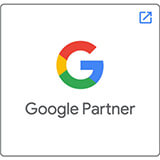A Complete Guide to Law Firm SEO: 4 Key Components to Implement
SEO can be a competitive advantage for any law firm. I will show you why and how.
Some Background with Numbers
First, according to Jakob Nielsen, the guru of usability, 88% of people use search to find what they need online. Over 70% of people use Google in the United States. This means that basically we can look to just Google in terms of our search results.
When users search for something in Google, they mostly click on the top slots. The number that is typically thrown around is that 40% of users click on the number one listing and 20% on the second spot. Over 90% of users only click on the first page of results.
That is simply staggering if you think about it. That means for your firm to be found, you basically need to be on the first page and most likely need to be in the top three slots!” If you are not, then you are not found.
So the key question is how do you get to be #1?” SEO can be broken down into four major categories:” Research, Architecture, Linguistics, and Authority.
1. Research
Research can be easy. In fact, you can do keyword research in as little as three minutes: http://www.paperstreet.com/blog/2004. Of course, if you are spending thousands on your site, you may want to take more than a few minutes to plan your campaign, but this is a good start.
Here is a specific example for a mythical Boston law firm that does corporate and business work.
a. Brainstorm Session – come up with just keywords.
- Boston, Corporate, Business, Employment, Lawyer, Law Firm, Attorney
b. Compile a keyword phrase list based on those phrases.
- Boston corporate lawyer
- Boston corporate attorney
- Boston corporate law firm
- Boston business lawyer
- Boston business attorney
- Boston business law firm
c. Check out actual search traffic using broad or exact matches with Google itself:
- [Boston business attorney]” ” ” ” ” ” ” 390
- [Boston business lawyer]” ” ” ” ” ” ” ” ” ” 390
- [Boston business lawyers]” ” ” ” ” ” ” ” 91
- [Boston corporate lawyer]” ” ” ” ” ” ” ” ” 28
- [Boston corporate law firms]” ” ” ” ” 16
- [Boston business law firm]” ” ” ” ” ” ” ” -1
- [Boston corporate attorney]” ” ” ” ” ” -1
- [Boston corporate law firm]” ” ” ” ” ” ” -1
What does this mean?” That 390 people per month search for Boston business attorney or lawyer using Google. Hardly anyone searches for “Boston business law firm” or “Boston corporate attorney”, as those results return the “Not enough data” from Google, so don’t focus your efforts on those. I suggest focusing on “Boston Business Attorney and Lawyer” and writing your copy, title tags and pages to match up to the pages that have the most searched for terms.
2. Architecture
Now you need a web site that is setup to be indexed. Yes, Google will index just about anything these days. They index HTML, PHP, ASP, JSP, CFM, PDF, TXT, JS and even Flash!” Moreover, if you use any standard content system, like WordPress, Movable Type, Joomla, Expression Engine your site will be indexed. Moreover, if you use any custom content system, your site will be indexed too.
However, while Google indexes everything, it may not put equal weight on all sites for on-page factors. For instance, sometimes web designers leave out Title Tags, H1 tags, Alt Tags, Footer text, and internal links either during the build or in the content insertion stage. Ack!” Sometimes web designers leave out even HTML text on the page or make an all Flash site. Double Ack!” Sometimes, these elements are just not planned for at all.
So there is a difference between a web design firm that knows sound architectural principles and one that doesn’t. A good firm knows tactics to improve SEO with on-page efforts and off-site efforts. Most of it involves planning. Some on-site efforts that we have found include (in order of importance):
- Copy that is relevant to search;
- Title Tags;
- H1 Tags;
- HTML Copy Text;
- Internal Link Structure;
- No Orphan Pages;
- Most important pages linked from home page;
- Menus (How they are created and where placed in the CSS code);
- ALT tags, Footer Tags, H2 Tags;
- Only using www or non-www version of your site;
- Only using / for your home page and not index and /;
- Uploading XML Sitemap; and
- and a lot of other tactics to improve the structure of the web site.
So yes, there is a lot to consider when building a site. Most designers know this, but you should always double check with them in the planning stage.
3. Linguistics
Linguistics boils down to your copy. Everyone says “write good copy;” shoot we even state that. But what is good copy?” To search, good copy means that you have the relevant terms that a person is searching for on the site.
You create relevant copy by answering the question the person is searching for. If I was a Boston corporate law firm, you better well write about LLCs, S-Corps, LLPs, C-Corps and all the other types of organization you can create for your clients.
To a person good copy is more than just being relevant. You need to make it readable, scannable and easy to digest.
Did you know that most people read in an F-Pattern?” This means that your good copy needs to have the most important elements in the top of the page. If you already write like a journalist, then you are probably fine (i.e. the inverted pyramid).
People also scan. You also need to breakup your page with headlines, subheads, bullet points, charts, graphics and write anything but long, boring paragraphs. You should also have calls to action on every page to convert people and get them to drill down into your site.
So if you write on relevant subject matters, make the text easy to read, you will benefit.
4. Authority
The final area of SEO that many people miss is authority. Google’s PageRank algorithm is based on links. How many people are linking to your site?” Google has over 200 factors to determine the relationship of the link to your site, including:
- Who is linking to your site?
- What is the sites rank that is linking to your site?
- What is the context of the link?
- What is the text that links to your site?
- What is the surrounding text of that link?
- Where on the page is that link?
- …and more factors.
You can see who is linking to your site using this tool – www.opensiteexplorer.org. Check out your site and check out your top competitors. There is a reason why you are #1 or #100. Bottom line, the more people that link to your site, the higher ranked those people are that link to you, then the higher you will rank.
You must consider your web site’s authority when planning an SEO campaign. If you have zero people linking to your site, you will not rank high except for niche searches where you are the only relevant resource. If you thousands of people linking to you, you can actually get away with having poorer copy.
So where can you get links?” Easy here are several ways, in no particular order.
- Directories (Free and Paid)
- Writing Good Articles or Link Bait Articles (Blogs are great for this)
- Issuing Press Releases and getting links from those
- Article Submission or Blog Postings and getting links from those
- Clients / Vendors / Affiliates
- Blogging
- Social Media
That is just the tip of the iceberg. Get creative, get more links, and become an authority online. When you combine that with a structurally sound web site architecture and relevant copy, you will rank higher.
Conclusion
Ranking higher can bring in more results. For instance, if the Boston Corporate law firm example we did above ranked #1 for all their phrases they would bring in roughly 400 new visitors to their site each month. If that firm just converted 1% into clients that means they bring in 4 new clients per month. If each of those clients averaged just $10,000 a project, then that is $40,000 in new business per month.
The good news, is this a tactic you can use to improve your business and market your firm.







